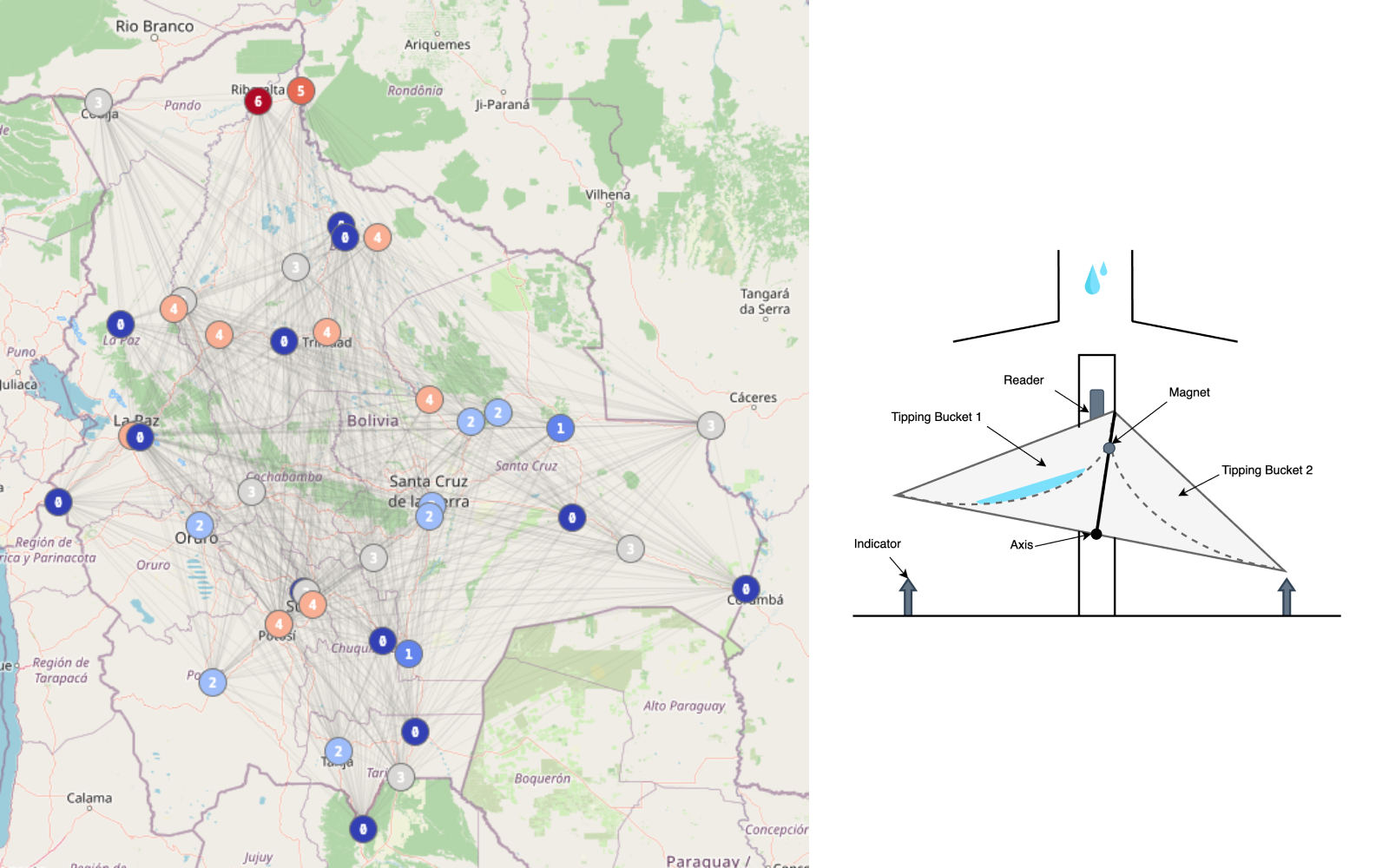
LACCI 2024, Bogotá, Colombia
Abstract: Accurate and timely prediction of heavy rainfall events is crucial for effective flood risk management and disaster preparedness. By monitoring, analysing, and evaluating rainfall data at a local level, it is not only possible to take effective actions to prevent any severe climate variation but also to improve the planning of surface and underground hydrological resources. However, developing countries often lack the weather stations to collect data continuously due to the high cost of installation and maintenance. In light of this, the contribution of the present paper is twofold: first, we propose a low-cost IoT system for automatic recording, monitoring, and prediction of rainfall in rural regions. Second, we propose a novel approach to regional heavy rainfall prediction by implementing graph neural networks (GNNs), which are particularly well-suited for capturing the complex spatial dependencies inherent in rainfall patterns. The proposed approach was tested using a historical dataset spanning 72 months, with daily measurements, and experimental results demonstrated the effectiveness of the proposed method in predicting heavy rainfall events, making this approach particularly attractive for regions with limited resources or where traditional weather radar or station coverage is sparse.
Paper and Supplementary Material
Latest version published on Nov. 15, 2024. Conference proceedings link
Author(s)
BibTeX
author = { Edwin Salcedo },
title = { Graph Learning-based Regional Heavy Rainfall Prediction Using Low-Cost Rain Gauges },
journal = { LACCI 2024 },
year = { 2024 }
}
Acknowledgements
The preliminary work of this research won the Hackathon "Mi Madre Tierra", which was organised by the Ministry of Environment and Water in Bolivia in November 2016. Subsequent research was funded in part by the Ministry (grant reference MMAYA/CIP/005/2017) and Google AI.
